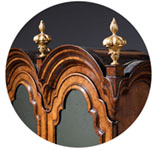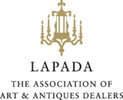The Sir William Stephenson 18th Century George II Lacquer Chinoiserie Bureau
Sold
Follow Us
The Sir William Stephenson 18th Century George II Lacquer Chinoiserie Bureau
A rare and important George II period lacquer chinoiserie bureau, exquisitely decorated with gilded chinoiserie scenes on a rich black ground. Featuring intricate depictions of figures, birds, and landscapes, this exceptional piece embodies the height of early 18th-century English craftsmanship. The fall-front reveals a beautifully fitted interior with small drawers, pigeonholes, and two secret drawers cleverly concealed within, adding to its intrigue.
This bureau bears the coat of arms of the Stephenson family, a remarkable discovery that enhances its historical significance. The Stephensons, originally from Alston in Cumbria, rose to prominence in trade and public life, with Sir William Stephenson (c.1685–1774) becoming a successful London merchant, Lord Mayor (1764–5), and a key figure in 18th-century commerce. His descendants forged influential alliances, including connections to the Sawbridge, Savile, and Erle-Drax families. A silver seal fob bearing the same arms, dated between 1725 and 1775, is held in the British Museum, likely belonging to the original owner of this bureau.
With exceptional provenance, rarity, and striking visual appeal, this bureau is a true collector’s piece. Important examples of chinoiserie furniture with such distinguished lineage and hidden compartments rarely come to market.
Additional reading
Extraordinarily, I was able to find only one direct match for Stephenson. While there are various armigerous families with that name, only one bears these particular arms, and Burke helpfully references later marriage alliances, confirming that we are indeed looking at the ‘right’ Stephensons.
The Stephensons originated as a farming family from Alston in Cumbria before branching out into trade in both Newcastle and London. More details about the family can be found in John Hodgson’s History of Northumberland (1820).
Sir William Stephenson (born after 1685), the youngest of three brothers, moved to London to seek his fortune. He became a successful hop merchant and distiller, a member of the Grocers’ Company, an Alderman in 1754, Sheriff in 1756–7, and was knighted on 8 June 1759 before serving as Lord Mayor of London in 1764–5. Despite his success, he remained connected to his roots, funding the construction of a new market cross in Alston. He passed away in 1774.
He had two daughters:
Anne Stephenson, who married John Sawbridge of Olantigh in Kent in June 1766, following the passing of his first wife, the daughter of Sir Orlando Bridgeman. Sawbridge inherited substantial estates in Kent and Middlesex, served as an MP, and later became a partner in his father-in-law’s business. Their grandson, John, married Frances Erle-Drax in 1827, heiress to Charborough House in Dorset and Ellerton Abbey in Yorkshire.
Alice Stephenson, who married her cousin, Henry Stephenson (eldest son and heir of John, the middle brother). Henry was an attorney, a member of the Middle Temple (called to the bar in 1753), and lived at East Burnham in Buckinghamshire. Their only child, Elizabeth, was born in 1762, married John Savile, second Earl of Mexborough, on 30 September 1782, and passed away in 1821. A memorial tablet in Westminster Abbey commemorates her. The Savile family seat was Methley Hall in Yorkshire.
Another notable family member was John Stephenson, son of Thomas, the eldest of the three brothers. Born in 1710, he likely moved to London under the guidance of his uncle Sir William. He took over the Horseshoe Brewery, one of London’s largest, and became a major importer of wine from Lisbon. In 1741, he married a wealthy widow, Mary Holford, and resided at Bedford Square and later Brentford Butts. He served as an MP for various constituencies from 1761 until his death in April 1794. A close associate of Robert Clive and the nabobs, he was a Director of the East India Company (1765–1768) and, during the American War of Independence, secured lucrative government contracts for provisioning troops in Newfoundland, Nova Scotia, and West Florida.
John Stephenson left his entire estate to his natural son, John Stephenson Junior, but tragedy struck soon after. On 13 November 1794, an employee at the brewery noticed John’s hat floating in a vat of beer—he had fallen into a cooling vessel and drowned.
Interestingly, there is a silver seal fob bearing these arms and crest in the British Museum, dated between 1725 and 1775. It most likely belonged to the original owner of the bureau.
Condition
Good. Wear consistent with age and use. Minor conservations in line with age and use. Remarkably, all decoration, hardware, locks and feet are original. It should be noted that the piece is in remarkable condition!
Dimensions
Height: 40.25 in (102.24 cm)
Width: 38 in (96.52 cm)
Depth: 21.5 in (54.61 cm)
PREVIOUSLY SOLD
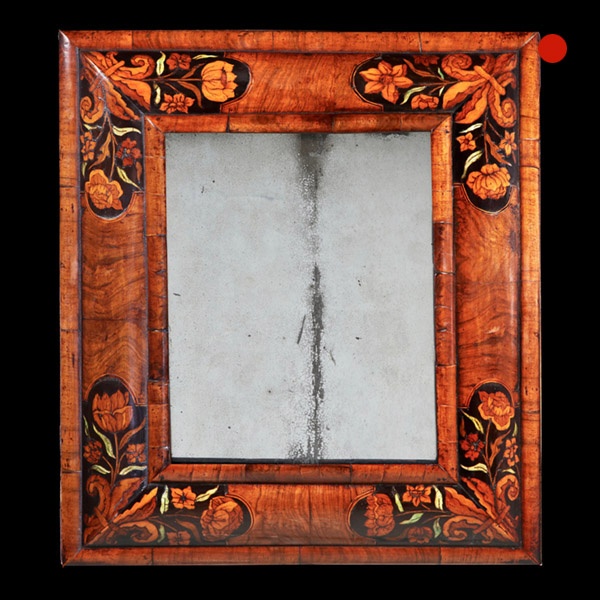
17th Century William and Mary Figured Walnut Marquetry Cushion Mirror
17th Century William and Mary Figured Walnut Marquetry Cushion Mirror SOLD Follow Us17th Century William and Mary Figured Walnut Marquetry Cushion Mirror From the restoration of the British Monarchy (1670-1685) we bring to you this charming...
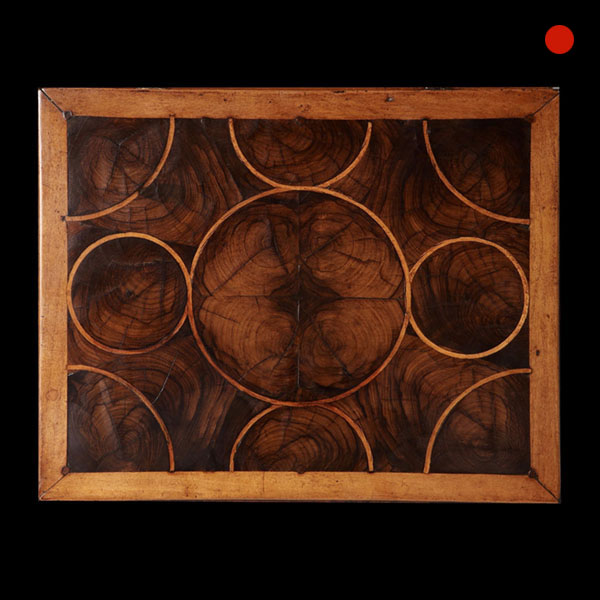
William and Mary Olive Oyster Lace Box
Fabulous 17th-century olive oyster ‘lace box’. ‘Lace boxes’ were popular amongst the middle and higher classes of society from C.1660-1700. The olive oyster box we have for offer here is a lovely original and unusually small example, at just 12″ wide. This form dates from circa 1680-1700.
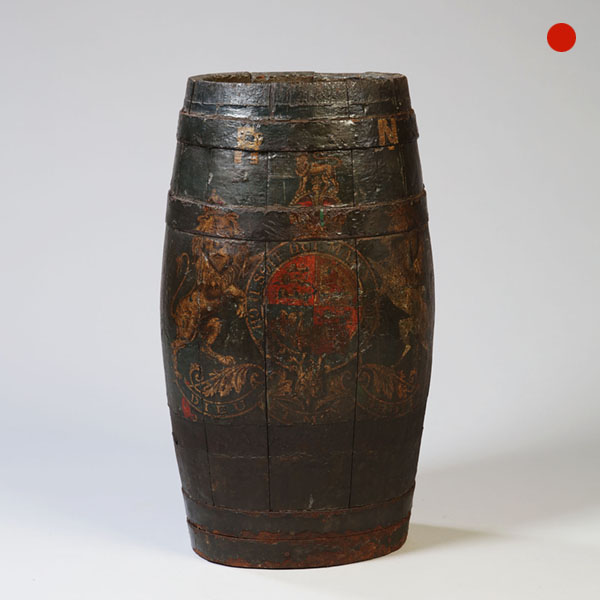
18th-Century Royal Navy Decorated Barrel
A rare 18th-century Royal Navy oak grog or powder barrel, lacquered and decorated with the Royal Coat of Arms. Super piece and makes a fantastic and atmospheric stick/cane stand.
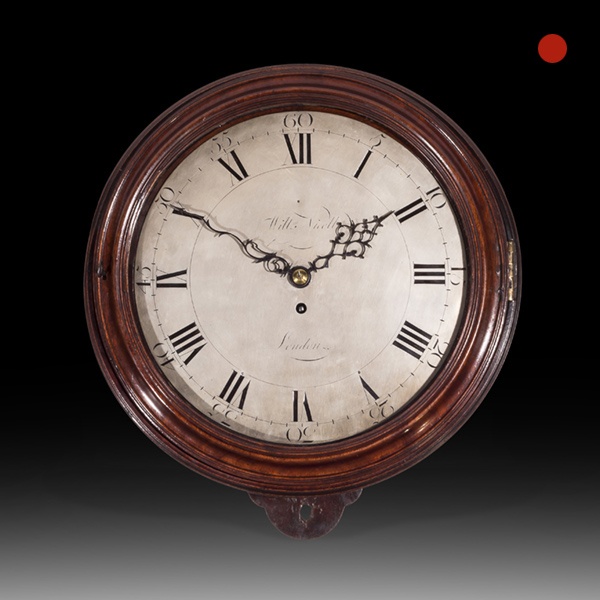
Large Mahogany 18th-Century Dial Clock, William Nicoll, London
The solid mahogany case has a moulded mahogany glazed door, which can be locked on the left-hand side. The original rectangular saltbox is permanently attached to the front and has doors to the side and the bottom.
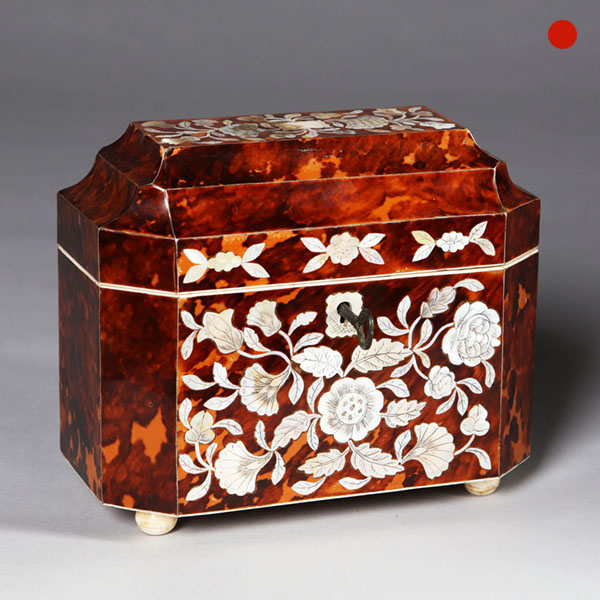
William IV Mother of Pearl Inlaid Tortoiseshell Tea Caddy
William IV Mother of Pearl Inlaid Tortoiseshell Tea Caddy 1800 England SOLDFollow UsWilliam IV Mother of Pearl Inlaid Tortoiseshell Tea Caddy A fine William IV mother of pearl inlaid tortoiseshell tea caddy. The term ‘caddy’ is believed to...
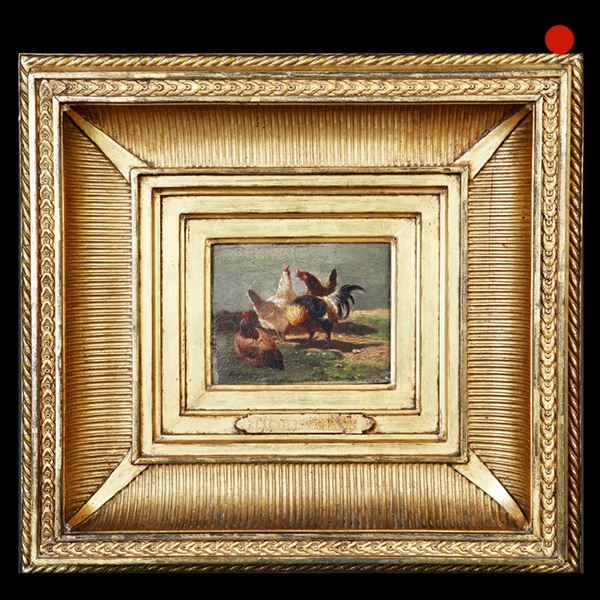
19th-Century Study of a Cockerel and Three Hens Oil Painting on Walnut Panel Charles Emile Jacque (1813-1894)
19th-Century Study of a Cockerel and Three Hens Oil Painting on Walnut Panel Charles Emile Jacque (1813-1894) 1813 to 1894 England SOLDFollow Us19th-Century Study of a Cockerel and Three Hens Oil Painting on Walnut Panel Charles Emile Jacque...

17th Century William and Mary Figured Walnut Marquetry Cushion Mirror
17th Century William and Mary Figured Walnut Marquetry Cushion Mirror SOLD Follow Us17th Century William and Mary Figured Walnut Marquetry Cushion Mirror From the restoration of the British Monarchy (1670-1685) we bring to you this charming...

William and Mary Olive Oyster Lace Box
Fabulous 17th-century olive oyster ‘lace box’. ‘Lace boxes’ were popular amongst the middle and higher classes of society from C.1660-1700. The olive oyster box we have for offer here is a lovely original and unusually small example, at just 12″ wide. This form dates from circa 1680-1700.

18th-Century Royal Navy Decorated Barrel
A rare 18th-century Royal Navy oak grog or powder barrel, lacquered and decorated with the Royal Coat of Arms. Super piece and makes a fantastic and atmospheric stick/cane stand.

Large Mahogany 18th-Century Dial Clock, William Nicoll, London
The solid mahogany case has a moulded mahogany glazed door, which can be locked on the left-hand side. The original rectangular saltbox is permanently attached to the front and has doors to the side and the bottom.

William IV Mother of Pearl Inlaid Tortoiseshell Tea Caddy
William IV Mother of Pearl Inlaid Tortoiseshell Tea Caddy 1800 England SOLDFollow UsWilliam IV Mother of Pearl Inlaid Tortoiseshell Tea Caddy A fine William IV mother of pearl inlaid tortoiseshell tea caddy. The term ‘caddy’ is believed to...

19th-Century Study of a Cockerel and Three Hens Oil Painting on Walnut Panel Charles Emile Jacque (1813-1894)
19th-Century Study of a Cockerel and Three Hens Oil Painting on Walnut Panel Charles Emile Jacque (1813-1894) 1813 to 1894 England SOLDFollow Us19th-Century Study of a Cockerel and Three Hens Oil Painting on Walnut Panel Charles Emile Jacque...
YOU MAY ALSO LIKE
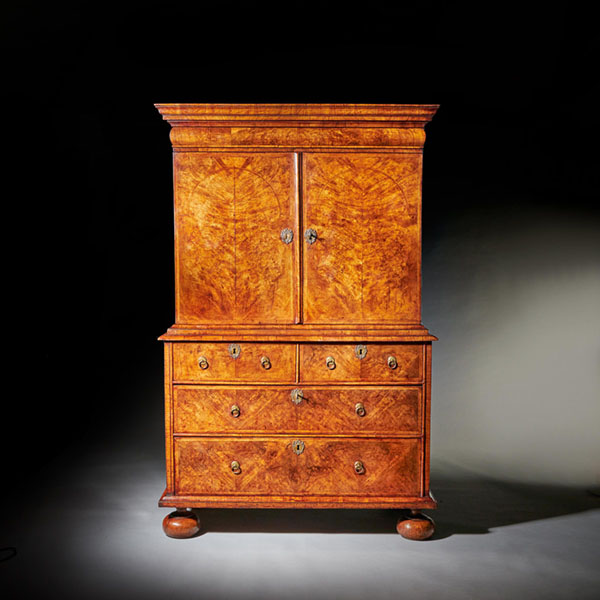
A Fine 17th Century William and Mary Burl Walnut Cabinet on Chest, Circa 1690
A Fine 17th Century William and Mary Burl Walnut Cabinet on Chest, Circa 1690 £27,800[wpforms_selector form_id="11387" show_title="on" _builder_version="4.22.1" _module_preset="default" custom_margin="-30px||||false|false"...
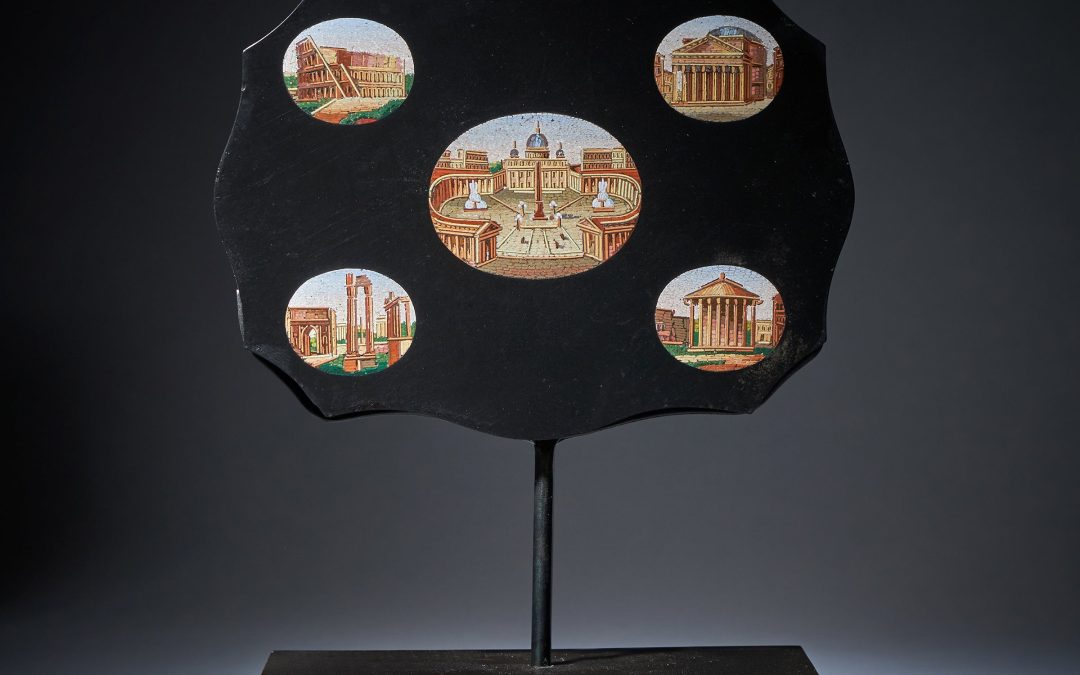
19th Century Grand Tour Micro Mosaic Tablet Depicting Italian Architecture
19th Century Grand Tour Micro Mosaic Tablet Depicting Italian Architecture £3,650Follow Us19th Century Grand Tour Micro Mosaic Tablet Depicting Italian Architecture A fine mid-19th century serpentine grand tour micro mosaic tablet or...
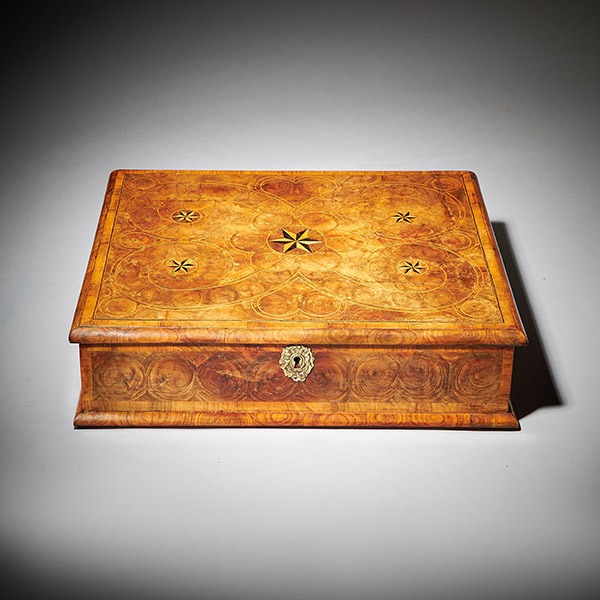
Large William and Mary 17th Century Inlaid Olive Oyster Lace Box, Circa 1690
Large William and Mary 17th Century Inlaid Olive Oyster Lace Box £5,500[wpforms_selector form_id="11387" show_title="on" _builder_version="4.22.1" _module_preset="default" custom_margin="-30px||||false|false" global_colors_info="{}"...
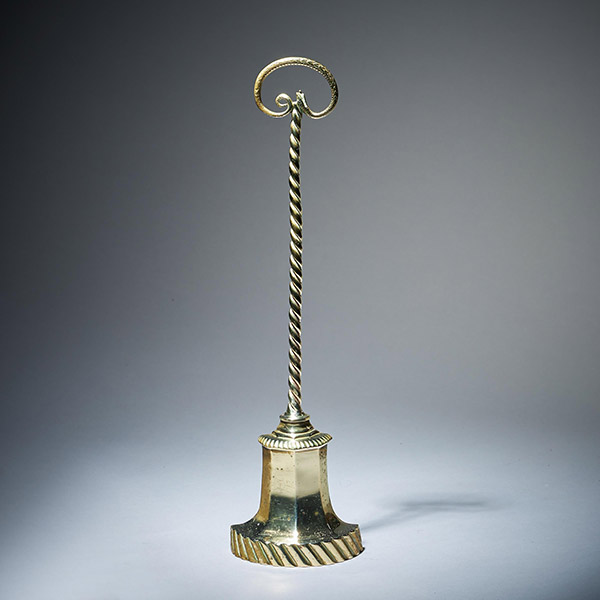
Early 19th Century High Regency Brass Snake Doorstop
Early 19th Century High Regency Brass Snake Doorstop £1,100Follow UsEarly 19th Century High Regency Brass Snake Doorstop A high Regency solid brass bell-shaped doorstop with snake handle, from the reign of George IV, Circa 1770. England The...
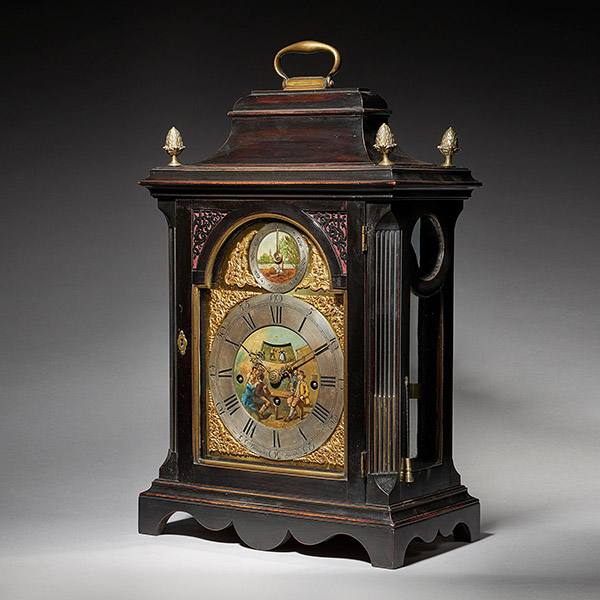
Extremely Rare George III 18th Century Quarter-Striking Bracket Clock, Signed
Extremely Rare George III 18th Century Quarter-Striking Bracket Clock, Signed Follow UsExtremely Rare George III 18th Century Quarter-Striking Bracket Clock, Signed An extremely rare George III 18th century ebonized quarter-striking bracket...
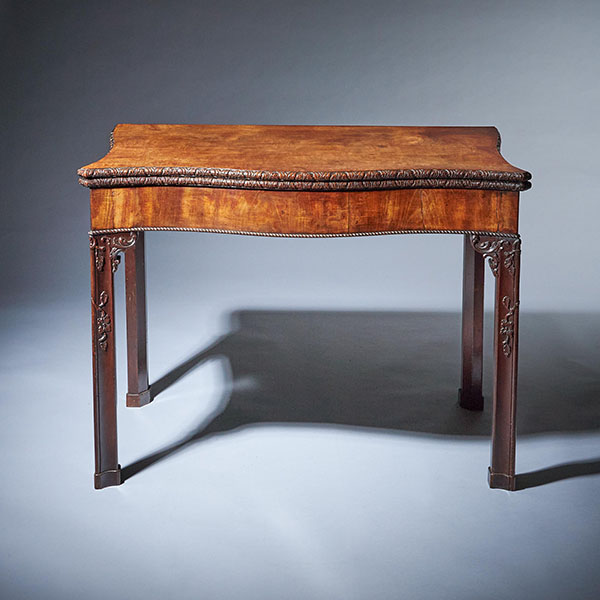
18th Century George III Carved Mahogany Serpentine Concertina Action Card Table
18th Century George III Carved Mahogany Serpentine Concertina Action Card Table £19,800Follow Us18th Century George III Carved Mahogany Serpentine Concertina Action Card Table A bold and impressive George III carved mahogany serpentine...

A Fine 17th Century William and Mary Burl Walnut Cabinet on Chest, Circa 1690
A Fine 17th Century William and Mary Burl Walnut Cabinet on Chest, Circa 1690 £27,800[wpforms_selector form_id="11387" show_title="on" _builder_version="4.22.1" _module_preset="default" custom_margin="-30px||||false|false"...

19th Century Grand Tour Micro Mosaic Tablet Depicting Italian Architecture
19th Century Grand Tour Micro Mosaic Tablet Depicting Italian Architecture £3,650Follow Us19th Century Grand Tour Micro Mosaic Tablet Depicting Italian Architecture A fine mid-19th century serpentine grand tour micro mosaic tablet or...

Large William and Mary 17th Century Inlaid Olive Oyster Lace Box, Circa 1690
Large William and Mary 17th Century Inlaid Olive Oyster Lace Box £5,500[wpforms_selector form_id="11387" show_title="on" _builder_version="4.22.1" _module_preset="default" custom_margin="-30px||||false|false" global_colors_info="{}"...

Early 19th Century High Regency Brass Snake Doorstop
Early 19th Century High Regency Brass Snake Doorstop £1,100Follow UsEarly 19th Century High Regency Brass Snake Doorstop A high Regency solid brass bell-shaped doorstop with snake handle, from the reign of George IV, Circa 1770. England The...

Extremely Rare George III 18th Century Quarter-Striking Bracket Clock, Signed
Extremely Rare George III 18th Century Quarter-Striking Bracket Clock, Signed Follow UsExtremely Rare George III 18th Century Quarter-Striking Bracket Clock, Signed An extremely rare George III 18th century ebonized quarter-striking bracket...

18th Century George III Carved Mahogany Serpentine Concertina Action Card Table
18th Century George III Carved Mahogany Serpentine Concertina Action Card Table £19,800Follow Us18th Century George III Carved Mahogany Serpentine Concertina Action Card Table A bold and impressive George III carved mahogany serpentine...
